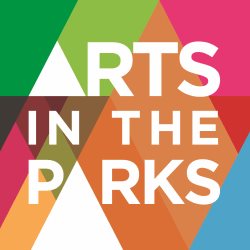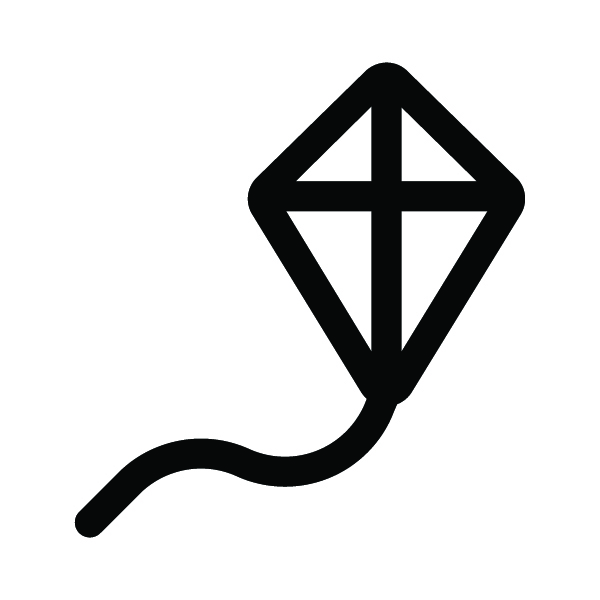 Clay & Paper Theatre set up a pod with Arts in the Parks branding throughout the summer in Amos Waites Park, by Josh Clavir (2018)
Clay & Paper Theatre set up a pod with Arts in the Parks branding throughout the summer in Amos Waites Park, by Josh Clavir (2018)
Whether this is your first event in a series or a one-time activity, you will need to brand the event or the series so it stands out. Start by asking how you can capture the essence of the activity. What words and images will you use? Create a logo or brand image that is unique to your project. If you have the resources, you might decide to hire a professional designer or branding professional. But whether you choose to do it yourself or bring someone in, don’t forget that you and your team are the experts. You know the program objectives, who you are trying to reach, and what will work in your community.
 Our Arts in the Parks logo
Our Arts in the Parks logo
Here are some questions to ask early in marketing planning:
- Does the title of your event capture the essence of the activity? Arts in the Parks doesn’t need a subheading; the name says it all: art in park settings. But if you choose a less literal title, such as Under the Sky, you might want to add a subheading that provides more detail, such as Under the Sky: Arts in the Great Outdoors.
- Is your event being produced by many partners under one umbrella? If so, you will need to decide if you want your event programming to have a distinct look. For example, Arts in the Parks is an initiative of Toronto Arts Foundation but we chose to create a new logo so Arts in the Parks would stand out from the other Foundation programs. We also created a separate website to make it easy for people to find detailed information and updates.
- Which communication platforms will be used? Social media, e-newsletters, printed newsletters, and websites are all great tools to help get the word out about your event(s). Each channel has its pros and cons so it’s a good idea to use a mix of them to increase your impact. A website, or a new page on your existing website, is a must-have as it’s a go-to place for people to find information and can be easily updated to provide more details about your event and your organization. Newsletters, both digital and printed, and blog posts maintain pre-existing connections making them a great form of targeted marketing. Social media posts and platforms are important communications tools. While posts might seem short-lived, Facebook, Twitter and Instagram are all great ways to inform people about events and remind them to attend. The most effective use is to post frequently and be consistent with your messaging. However, make sure you don’t overburden yourself by trying to use every single form of communications if you don’t have the capacity to do so.
- What’s the best way to reach people? Social media is very important but at a local level word-of-mouth is key. At an Arts in the Parks focus group, community organizers agreed that in person or face-to-face encounters are an important way to get community members to attend events.
-

TIP
Create a unique hashtag to use in posts across all social media channels. Hashtags make it easier for people to find you on social media and help to connect with your audience, generate interest and build brand awareness. Social media was the second most common way attendees found out about AITP events in 2018. Make sure the hashtag you create is easy to read and remember, clearly relevant to your initiative and not too long. TAF uses #artsintheparksTO on Facebook, Twitter, and Instagram.